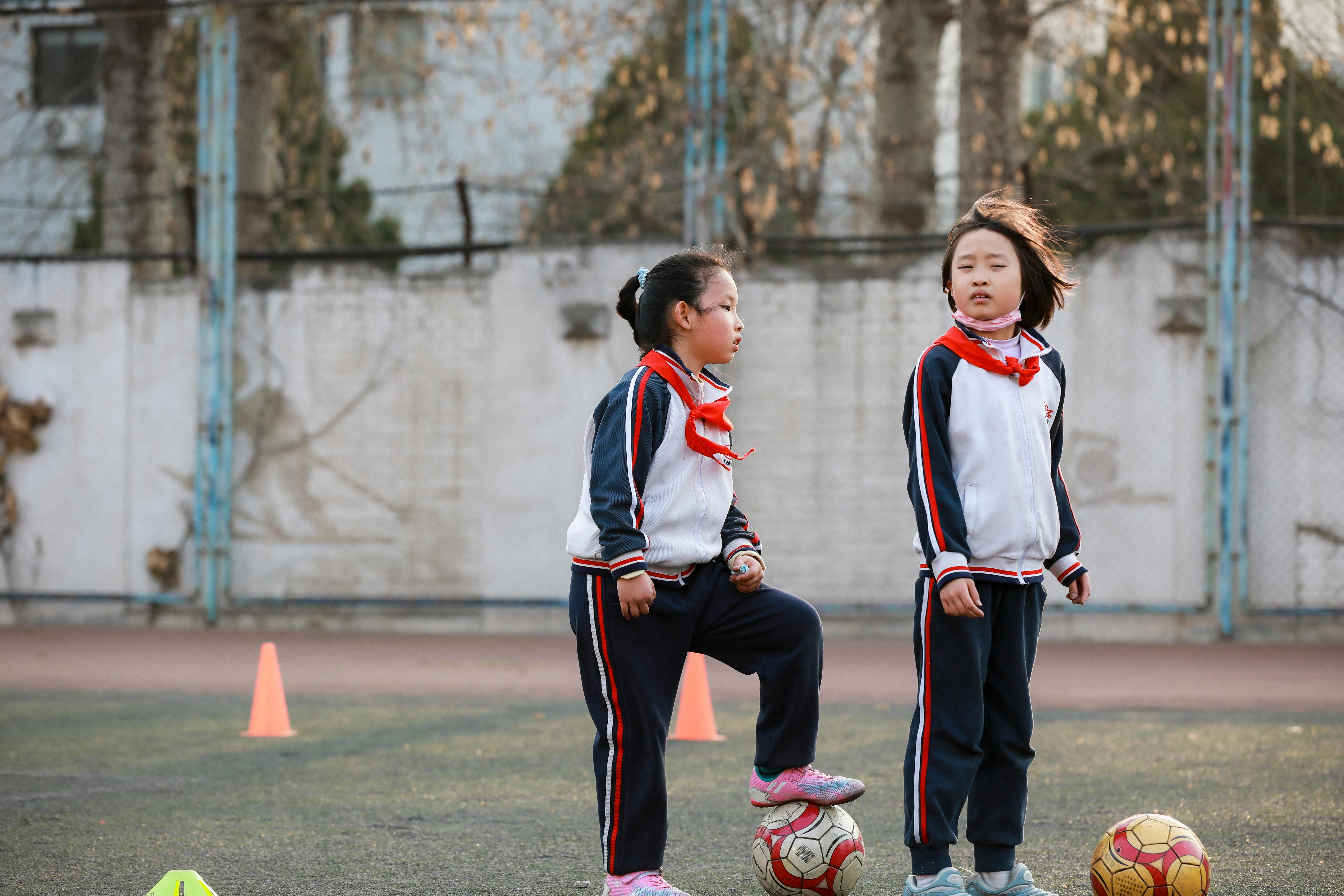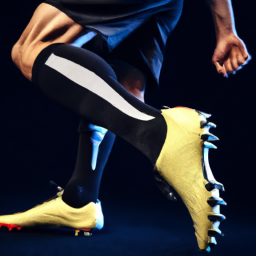A striker in soccer is a player who is primarily responsible for scoring goals. This player is usually positioned closest to the opposition’s goal and is often referred to as a “goal-scorer”. Strikers typically have excellent ball control, quick reactions, and good decision-making skills. They are typically the most creative players on the field and are relied upon to create chances and score goals.A Striker in soccer is an attacking player whose primary role is to score goals. This player is usually positioned nearest to the opposing team’s goal and will receive passes from midfielders in order to create scoring chances. The striker is generally the most agile and technically skilled forward on the team and must possess excellent shooting, dribbling, and passing skills in order to be successful.
Types of Strikers in Soccer
The modern game of soccer has brought about several different types of strikers that can be used to score goals. Each type of striker has its own strengths and weaknesses, so it is important to understand the different types so you can choose the right player for your team. The most common types of strikers are:
Target Men – These are typically big, strong players who can hold up the ball well and bring other players into the attack. They are usually good in the air and can use their physical presence to create chances for their teammates.
Poachers – These are strikers who have a knack for being in the right place at the right time. They tend to be good at anticipating passes and making runs off the ball which enable them to get into goal scoring positions more often than other types of strikers.
Foxes in the Box – These are players that have excellent close control and technical ability, allowing them to find space in tight situations inside the penalty box. They often have great composure when shooting, making them lethal finishers from close range.
Speedsters – These are attackers who rely on their speed and agility to beat defenders and create chances for themselves or their team mates. They tend to be dangerous on counter attacks and can stretch a defence with their pace.
False 9s – This type of striker has become increasingly popular in recent years as teams look for ways to break down defences without having a traditional centre-forward on the pitch. A false 9 is someone who drops deep into midfield, allowing his team mates more space to make runs forward when attacking.
Regardless of which type of striker you choose, it is important to remember that all players need time and practice to develop their individual skills if they are going to reach their full potential on the pitch.
Endurance
A good striker in soccer needs to have a high level of endurance in order to run around the field for long periods of time and to be able to keep up with the pace of the game. Stamina is essential for a striker, as they will need to be able to last throughout the entire match without getting too tired. Having good endurance also allows a striker to remain focused on the game and make quick decisions on the field.
Accuracy
In order to be successful in soccer, it is important for a striker to have good accuracy when shooting or passing the ball. A striker should be able to accurately hit their target when shooting or passing, which can make all the difference when trying to score a goal. Additionally, having good accuracy ensures that a striker can play with precision and increase their chances of making successful plays.
Agility
Strikers must possess great agility if they are going to be successful on the soccer field. Agility is important as it allows strikers to quickly move around opponents and out-maneuver them when making runs forward or tracking back defensively. Strikers should also have good balance in order to maintain control over their movements and stay on their feet while dribbling or chasing after loose balls.
Vision
A key quality that all strikers must possess is great vision in order to read the game and anticipate what their opponents are going to do next. Strikers need excellent vision in order pinpoint gaps between defenders so they can make runs or passes into those areas at just the right moment. Good vision also helps strikers recognize patterns of play and set plays that can produce goalscoring opportunities.
Finishing Ability
Finally, one of the most important qualities for any striker is an ability to finish off chances created by their team mates with deadly efficiency. A good finisher will always be looking for opportunities in front of goal and will pounce on any chance that comes their way with conviction and confidence. Finishing ability is essential for any top-level striker as it separates them from just being another player on the pitch who creates chances but fails to capitalize on them.
Responsibilities of a Striker in Soccer
A striker is one of the most important positions in soccer. It is the responsibility of a striker to score goals for their team. A striker must possess good technical ability and be comfortable on the ball, as they will be required to hold up play and link up with other players. They should also have excellent shooting ability and be able to finish confidently when presented with the opportunity.
In addition to scoring goals, it is also the job of a striker to support other players on the pitch by making runs, occupying defenders and creating space for other attackers to exploit. A striker should have good knowledge of when to make runs, when to drop back into midfield or defense, and when to press opponents who are in possession of the ball.
Strikers must also possess good tactical awareness in order to effectively read the game and make smart decisions when asked by their manager or coach. A striker should be able to anticipate where passes will go before they happen as well as recognize patterns of play and spaces that can be exploited by their team.
It is important for a striker to remain composed under pressure, as this will allow them to make better decisions on the ball and take advantage of any opportunities that come their way. A striker should have good communication skills so that they can effectively link up with their teammates and provide instructions while on the pitch. Lastly, a striker must always stay focused during matches as one moment of lapsed concentration could cost their team dearly.
Positioning for a Striker in Soccer
Positioning is an important part of soccer, and strikers must understand the importance of their positioning on the field. Strikers are typically the most advanced players on the field and should be looking to get into goal-scoring positions as much as possible. Strikers must have a good understanding of the game and their team’s tactics in order to know when to make runs, when to stay high up the pitch, and when to drop deep.
When attacking, strikers should look to occupy space between opposition defenders, either near the penalty area or beyond it. This allows them to maximize their chances of getting involved in goal-scoring opportunities. It is also important for strikers to be aware of when their team has possession and how they can move into space that will help create scoring chances.
When defending, strikers should look to press high up the pitch in order to force opposition players into making mistakes or playing inaccurate passes. This will create more chances for their own team to regain possession and attack quickly. Strikers must also understand that they will have defensive duties when their team does not have possession, so they need to be able to quickly transition from attack into defense in order to maintain a strong defensive shape.
Strikers must also be aware of where opposition defenders are at all times in order to know where best to position themselves on the field. By knowing where defenders are located, strikers can better predict where passes are likely coming from and make runs accordingly. This helps them avoid being caught offside while still maximizing their chances of getting involved in goal-scoring opportunities.
Overall, positioning is an important part of a striker’s game and one that should not be overlooked or taken lightly. By understanding how best to position themselves on the field, strikers can maximize their chances of being involved in goal-scoring opportunities and help lead their team towards victory.

Finishing Techniques for a Striker in Soccer
Finishing is an essential skill for any soccer striker. It involves the ability to control the ball and make clean contact with it, as well as the ability to read the game and anticipate where the ball will go. To become a more successful striker, it is important to develop and practice a variety of finishing techniques. Here are some of the most important finishing techniques for a soccer striker:
The first technique is shooting on target. This involves aiming at the goal and having the power and accuracy to get the ball inside of it. Striker must make sure they have their body weight behind their shot, as this will increase their accuracy. They should also practice shooting from different angles and distances to get comfortable shooting from anywhere on the pitch.
The second technique is striking with power. This means that when shooting, strikers should put more power into their shots in order to increase their chances of scoring. Striker should practice striking with both feet in order to improve their accuracy and make sure they can shoot with power from either side of their body.
The third technique is volleying the ball. This requires strikers to be able to control and shoot at difficult angles while still keeping their shot on target. Volleys require quick reflexes and great technique as they involve shooting while off balance or when there is not much time for set up or adjustment of position.
Finally, strikers need to practice heading technique in order to take advantage of crosses or long balls into the box from midfielders or defenders. Headers require good timing, placement, and power so that strikers can direct them towards goal instead of away from it. It is important for strikers to practice this technique so that they can use it effectively during games when opportunities arise.
These are just some of the finishing techniques that every soccer striker should be familiar with in order to become more successful at scoring goals. By practicing these techniques regularly, strikers can become more confident and proficient in front of goal, which will ultimately lead to better performances on match day!
Attacking Moves for a Striker in Soccer
Strikers in soccer are known to be the most prolific goal scorers on the field. As such, it is important that they possess an array of attacking moves to help them find the back of the net. There are a variety of attacking moves that a striker can use in order to outwit their opponents and create scoring opportunities.
The first move that most strikers should master is the ‘cut inside’. This involves the striker making a run towards the outside of the pitch before quickly cutting inside and sending a shot or cross into the penalty area. This move is effective against defenders who are expecting the striker to continue running down the line, allowing them to catch their opponents off guard.
Another key attacking move for strikers is ‘dragging’. This involves using clever body positioning and footwork to drag defenders away from their position, creating space for other players on their team. It is also effective at creating angles which allow strikers to shoot from far distances with accuracy.
Finally, strikers should also make use of ‘dummy runs’. This involves making runs towards certain areas of the pitch without actually touching the ball, causing confusion amongst defenders who may think they have marked their opponent out of play only for them to suddenly change direction and receive the ball elsewhere.
By mastering these attacking moves, strikers can become more effective at finding chances to score goals and help their team secure victory in games.
Transitioning from Defense to Attack as a Striker in Soccer
Playing as a striker in soccer requires a different set of skills and tactics than playing as a defender. As a striker, you will be expected to move forward and attack the opposing team’s goal while also being able to maintain possession of the ball. Transitioning from defense to attack is an important skill for any soccer player to have, and one that can be difficult to master.
In order to be successful in transitioning from defense to attack, it is important to have an understanding of when and how you should make the move. The most effective way of transitioning is when you recognize an opportunity that exists for you either on your own or with the help of your team. This could include recognizing a potential breakaway situation or seeing that there is space around the defenders that can be exploited.
Once the opportunity has been identified, it is important to act quickly and decisively. This means taking possession of the ball as soon as possible, making quick passes if necessary, and getting into position before the opposing team can react. It is also essential that you keep your head up while attacking so that you can scan for other opportunities or be aware of potential defensive threats.
An important part of transitioning from defense to attack is learning how to use your body effectively. This includes positioning yourself between two defenders, shielding the ball with your body, and using your body weight to gain control over it quickly and efficiently. It also involves being able to dribble past defenders at speed while maintaining good control over the ball.
Finally, it’s important for strikers to practice receiving passes from teammates while on the move. The ability to receive passes on the run and quickly transition into an attack will give you an advantage against slower-moving defenders. With practice and repetition, this skill will become second nature and help you become a more effective attacker in soccer matches.

Conclusion
A striker in soccer is an essential player on the team. They are responsible for creating scoring chances and making sure the team has a good attacking presence. Strikers must have good footwork, agility, and explosive speed to be able to outrun defenders and get into scoring positions. They also need to have good vision, creativity, and decision-making ability to be effective in their role.
Strikers are the key players when it comes to winning matches as they are responsible for finding the back of the net. While there is no one-size-fits-all approach when it comes to strikers, all teams need one in order to be successful on the pitch.
In conclusion, a striker in soccer is a crucial player who needs to possess a variety of skills and abilities in order for them and their team to be successful. It takes a special type of player with both physical and mental attributes to thrive as a striker.

